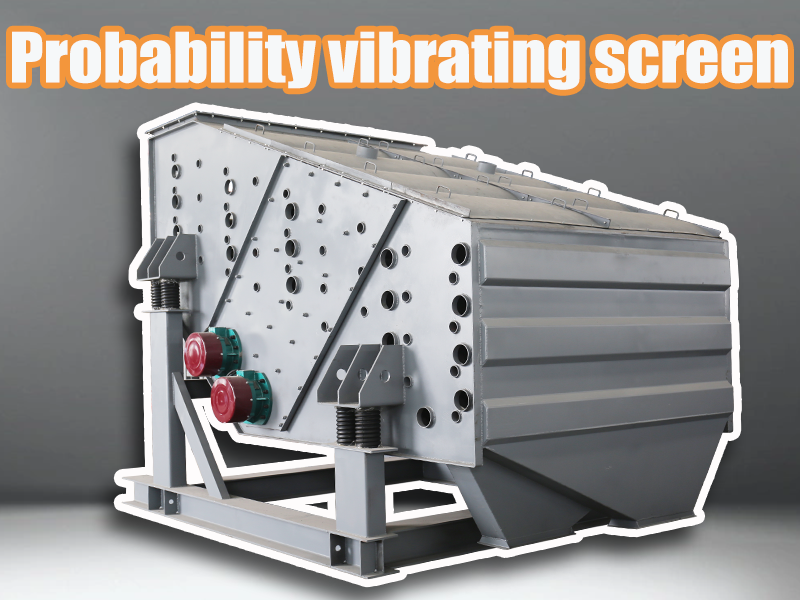In industrial sectors where the handling and processing of granular materials are core operations—such as metallurgy, mining, power plants, and construction—the need for efficient, reliable, and scalable screening solutions is paramount. One material that presents unique challenges in this context is slag, a byproduct of smelting and refining processes. Slag is often heterogeneous in size and composition, making it difficult to classify and sort efficiently using traditional screening technologies.
To meet the growing demand for higher throughput, more precise classification, and lower operational costs, industries are increasingly turning to probability vibrating screens. These advanced screening machines represent a significant evolution in the field of material separation, offering unparalleled efficiency, flexibility, and ease of use.

Understanding the Probability Vibrating Screen
A probability vibrating screen, also known as a probabilistic screen or statistical screen, operates on a fundamentally different principle compared to conventional linear or circular vibrating screens. Rather than relying solely on large amplitudes and low frequencies to move material across the screen deck, a probability screen employs high-frequency vibrations and a multi-layered deck design to enhance the likelihood that particles will find and pass through the appropriate mesh openings.
This concept is rooted in probability theory—hence the name. When fine particles are presented to a screen surface at a high velocity and in a thin layer, the probability of those particles finding a mesh opening and passing through it increases dramatically. This approach not only improves screening accuracy but also results in significantly higher processing capacity.
Exceptional Throughput: Doubling Production Output
One of the most striking advantages of a probability vibrating screen is its ability to double or even triple the output compared to traditional screening systems. By utilizing a specialized vibration mechanism and a finely-tuned mesh configuration, this equipment ensures that more material is processed in less time, without sacrificing accuracy or consistency.
For operations dealing with large volumes of slag—where time is money—this can translate into a substantial boost in productivity. The high-speed screening action effectively separates fine and coarse particles in a single pass, minimizing bottlenecks in production and reducing the need for re-screening or reprocessing.
Multi-Layer Screening: One Machine, Multiple Classifications
Traditional screening systems often require multiple machines or several passes to achieve detailed classification of materials into different size ranges. In contrast, the probability vibrating screen can be designed with up to five screening layers, allowing it to perform multi-stage classification in a single operation.
Each layer of mesh can be fitted with a different aperture size, enabling the system to sort slag into several particle size categories simultaneously. This is particularly useful in applications where different slag grades are needed for recycling, reuse, or disposal purposes. With just one machine, operators can efficiently separate coarse chunks, mid-sized granules, and fine particles—streamlining the entire material handling process.
Flexible, User-Friendly Design with Detachable Components
In addition to its performance capabilities, the probability vibrating screen is thoughtfully designed for ease of maintenance and operational flexibility. A standout feature of the machine is its modular construction, including detachable front and rear discharge outlets. This design makes it much easier to access internal components, clean the system, or change screen meshes as needed.
Frequent mesh replacement is often necessary in slag screening applications, where abrasive materials can cause rapid wear. Thanks to the detachable discharge ports and a simplified frame structure, the screen mesh can be quickly replaced without disassembling the entire unit. This significantly reduces downtime, lowers maintenance costs, and helps ensure continuous operation even in demanding environments.
Ideal for Harsh Industrial Environments
Slag processing environments are typically tough on equipment, involving high temperatures, heavy loads, and abrasive materials. Probability vibrating screens are engineered to withstand these harsh conditions. Built with robust steel frames, high-quality mesh materials, and heavy-duty motors, these machines offer long service life and consistent performance even under the most challenging circumstances.
Additionally, many models can be customized with dust covers, noise-reducing enclosures, or anti-clogging systems to further improve workplace safety and environmental compliance.

